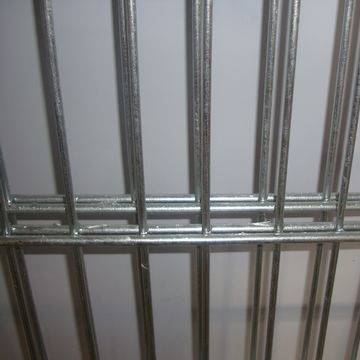The acoustic benefits of perforated metal
Did you know perforated metal can be a key component in interior and exterior design for controlling sound? 358 Security Fence

Here’s how architects and designers are using perforated metal to manage noise:
Perforated metal in acoustics is typically applied as ceiling panels, wall cladding, screening and architectural facade to control sounds and noises within residential, leisure and commercial buildings.
Depending on the acoustic issue, each panel can be designed to help absorb, reflect or scatter sound, or to cut out certain frequencies.
But how does it work?
Using perforated metal to absorb sound
When absorbing, reflecting or scattering sound, perforated metal acts as a protective and acoustically ‘transparent’ covering for acoustic material. As the acoustic material itself is responsible for achieving the necessary noise control, the perforated metal has to be transparent to sound waves, so sound can reach the material behind.
When using perforated metal in acoustics in this way, it’s important to specify a perforation pattern and material that offers the greatest sound transparency for all frequency levels. This is typically a perforation pattern of lots of small holes, closely spaced, to allow maximum sound to pass through.
This type of application can be used in interiors. It’s commonly seen in offices, hotels, stadiums, schools, leisure centres and industrial work environments, when control of ambient sound is needed. Architects may also use perforated metal in this way as exterior cladding to block outdoor sounds.
Using perforated metal to manage frequencies
If you want to cut out or reduce a specific problem noise, perforated metal isn’t required to be transparent but has an active role in acoustic control through a resonant sound absorber.
In this type of application, the holes in the perforated metal panels interact with a layer of trapped air to concentrate the absorbed sounds into a specified frequency range. These types of systems are highly efficient at absorbing low frequency sounds.
Perforation pattern, pitch and thickness of the metal material are crucial to achieve the required result.
Which material is best for using perforated metal in acoustics?
When choosing the material of perforated metal in acoustics, aluminium and stainless steel are the most common metal choices as they retain strength when perforated, even in the thinnest profile.
Advantages of using perforated metal in acoustics
There are multiple benefits to specifying perforated metal for acoustic applications:
Arrow Metal: Proven metal perforation experts
Arrow Metal has an extensive range of readymade perforated metal panels in stock, ready for immediate dispatch to anywhere in Australia, in a choice of popular hole styles, sizes and materials.
Discover products that suit your style and create a list of the items you like or want most.
Search through our latest projects and articles to find your inspiration for your next project
Join the community and give your insight into projects and news

Bending Mesh Fence Subscribe to get all the news, views, resources, comment and opinion on all things Architecture & Design delivered straight to your inbox.